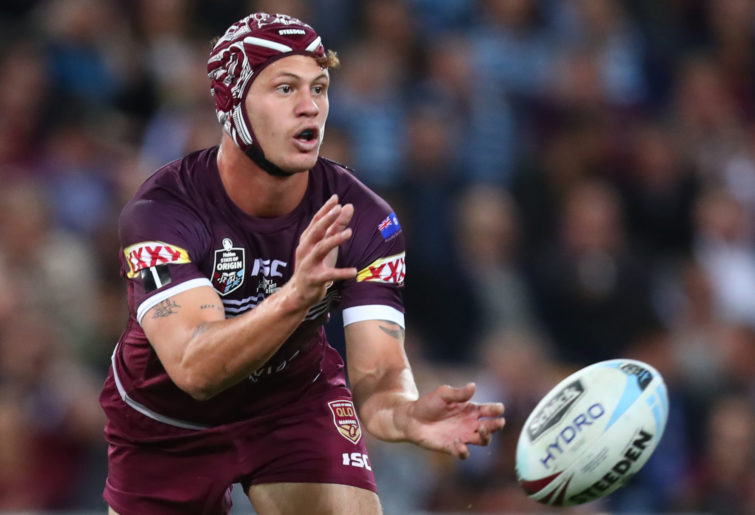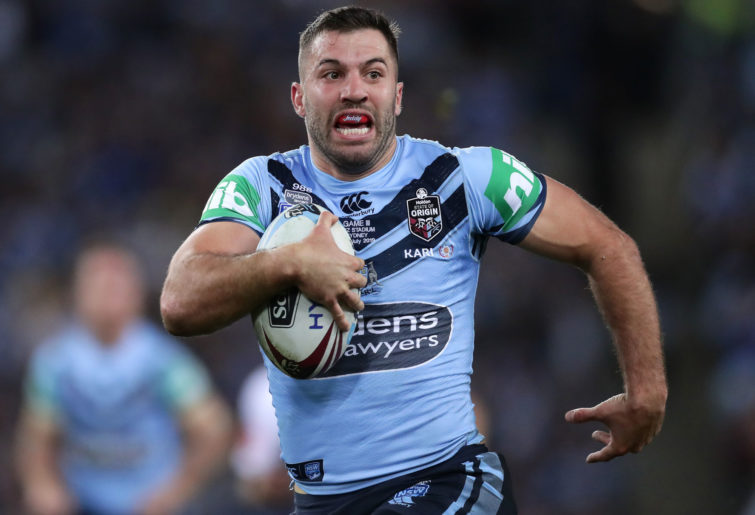Blues Origin predicted team: Maguire set to overhaul squad in search of winning combination
New coach Michael Maguire is considering as many as 50 players for the State of Origin series opener with not even captain James Tedesco…
Opinion
This year, for the first time and as a result of COVID-19, State of Origin will be held after the grand final.
Since its inception over 40 years ago, Origin has been the league’s showpiece and the holy grail for eligible players.
Most players rate Origin a level above even Tests, and its popularity and commercial value to the NRL is immense.
So how will Origin look this year? Certainly, it will be different, and there will be some significant challenges to players and administrators, as well as the risk of some brand damage.
Traditionally, the three-game Origin series kicked off in early June, at about the Round 12 mark. At this time of year most players were relatively fresh, available, injury free, in form, match fit, and are raring to go if they were lucky enough to be selected.
At this stage of the season the top eight was still wide open, and the finals were far enough away for Origin to receive maximum media coverage and fan interest.
Both NSW and Queensland could select replacement players from the ongoing competition as required to respond to both injury and form.
In the 2019 series, a total of 47 players were used. Some like Kalyn Ponga for Queensland and James Tedesco for NSW played every game, while others were called up for just one or two games.

(Photo by Chris Hyde/Getty Images)
By contrast, this year’s final competition round (Round 20) will be held in the weekend commencing 24 September, the finals will conclude a month later on 25 October (grand final day), and the three-game Origin series will commence ten days after that on 4 November, and run through until 18 November.
This will present some unique challenges to the state selection committees, as they’ll need to begin building their train-on squads immediately after the conclusion of Round 20, initially selecting players from the bottom eight teams.
This squad would be added to as teams drop out of the finals, and some initially selected players may drop out if no longer considered necessary. Origin coaching staff would need to keep the squads training, in some sort of form and somehow match fit for up to six weeks before they potentially run out for Origin 1.
Unlike prior years, selectors won’t be able to select players mid-series from the ongoing competition in the event of injury or form, nor can they assume that their squads will come from the top eight teams playing in the finals.
To illustrate, over a third of the players who played Origin in 2019 came from teams who didn’t make it through to the finals, and only seven players who played Origin last year appeared in the grand final.
The number of players to be selected in the train-on squads will also be problematic. Selectors won’t be able to rely upon pencilled-in players from the top eight teams remaining fit, in form and available at the end of the competition, so they’ll need to have almost a shadow squad selected from the bottom eight teams, just in case.
Come grand final day, the size of each state squad could be around 35 players before it is trimmed for Origin 1. Those squad players not selected for Origin 1 would need to train until Origin 3 to cover for injuries and suspensions.
Let’s not forget the dreaded bubble either. Currently, players are kept in their club’s bubble, so presumably once selected in the state train-on squads they would then need to enter a state bubble, in order to comply with the NRL’s commitments in relation to the virus.

(Photo by Matt King/Getty Images)
All of this may lead to the following points.
• A decrease in the desire to play Origin. After 20 rounds plus the finals series, player fatigue will be at an all-time high, and many players will be carrying injuries. Add to this the extended bubble, and some players may wish to opt out and have a break.
This will be a particular concern for those players selected as mere cover for marquee players involved in the finals, as the shadow players may never actually get on the field and may be dropped from the squad prior to Origin 1.
Players making it through to the grand final may also find it hard to motivate themselves again for Origin, whether their bodies can take it or not.
You can also expect pressure from clubs for players to opt out, attend to their injuries, and freshen up for season 2021. What will be the consequences, if any, for a player making himself unavailable for Origin?
• A weakening of the playing squads. The longer the season goes the longer the injured list will get. We’ve already seen an exceptionally high attrition rate so far this year and it will no doubt continue.
• A drop in the standard of games. Fatigued, injured, unavailable and unmotivated players would lead to a poorer spectacle, with games not likely to be played with the same level of speed and intensity that we generally associate with Origin.
• Lower media and supporter interest. Coming at the end of a long season, supporter interest may wane after the grand final, and this lower level of interest would be accentuated in the event that a high number of marquee players are unavailable.
So this year’s Origin series will be like no other before, and there’s a risk that the NRL’s golden goose could be an unexpected casualty of COVID-19. It won’t be ideal, but I guess it’s the best we can expect this year.
It will be interesting to see how, and if, Peter V’landys and Andrew Abdo deal with the challenge, and whether they still think Origin should be played at season’s end in the future.